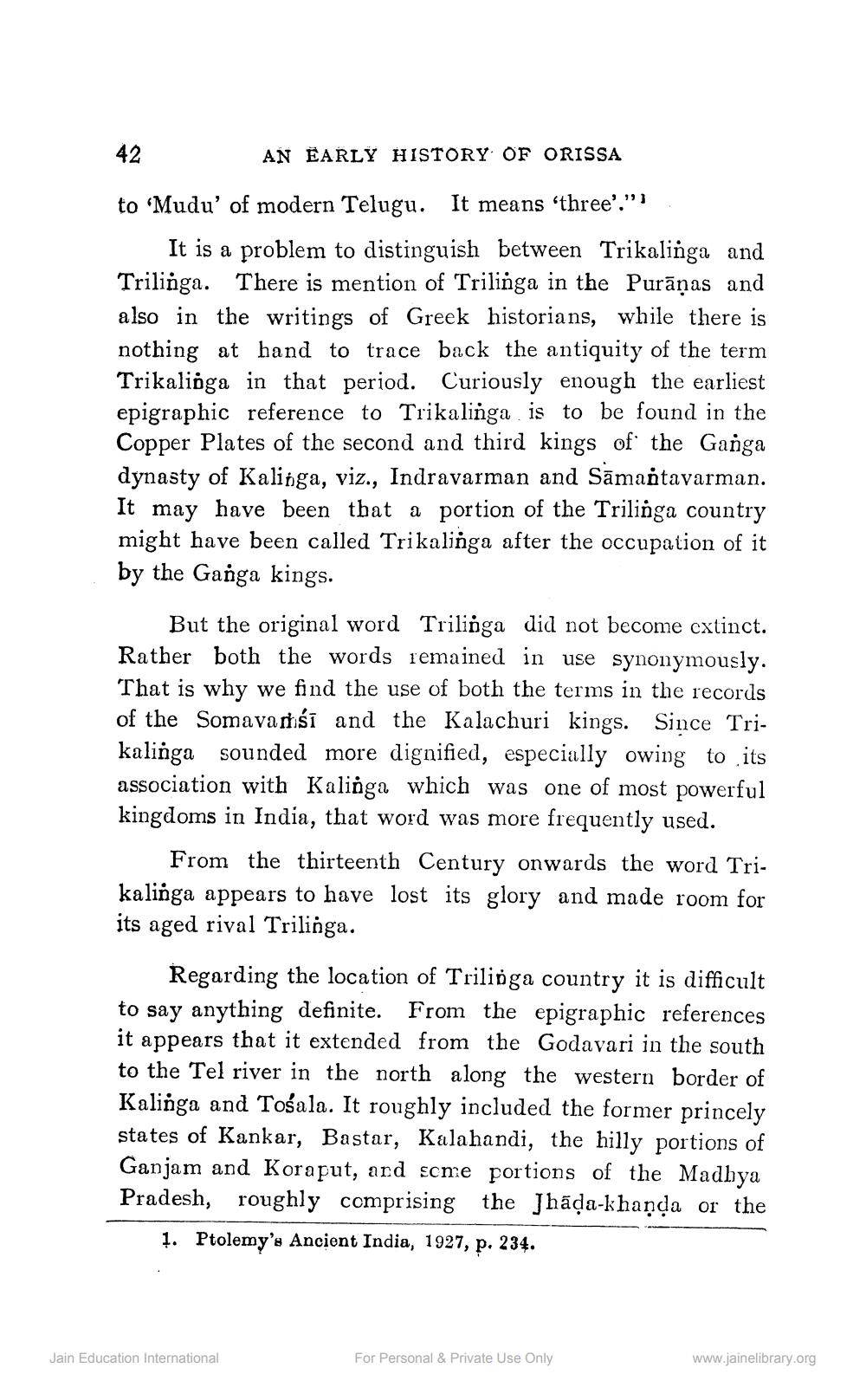________________
42 AN EARLY HISTORY OF ORISSA to ‘Mudu' of modern Telugu. It means 'three'."}
It is a problem to distinguish between Trikalinga and Trilinga. There is mention of Trilinga in the Purāṇas and also in the writings of Greek historians, while there is nothing at hand to trace back the antiquity of the term Trikalioga in that period. Curiously enough the earliest epigraphic reference to Trikalinga is to be found in the Copper Plates of the second and third kings of the Ganga dynasty of Kalinga, viz., Indravarman and Sāmantavarman. It may have been that a portion of the Trilinga country might have been called Trikalinga after the occupation of it by the Ganga kings.
But the original word Trilinga did not become extinct. Rather both the words remained in use synonymously. That is why we find the use of both the terms in the records of the Somavartiśī and the Kalachuri kings. Since Trikalinga sounded more dignified, especially owing to its association with Kalinga which was one of most powerful kingdoms in India, that word was more frequently used.
From the thirteenth Century onwards the word Trikalinga appears to have lost its glory and made room for its aged rival Trilinga.
Regarding the location of Trilinga country it is difficult to say anything definite. From the epigraphic references it appears that it extended from the Godavari in the south to the Tel river in the north along the western border of Kalinga and Tośala. It roughly included the former princely states of Kankar, Bastar, Kalahandi, the hilly portions of Ganjam and Koraput, and some portions of the Madhya Pradesh, roughly comprising the Jhāda-khaņda or the
1. Ptolemy's Ancient India, 1927, p. 234.
Jain Education International
For Personal & Private Use Only
www.jainelibrary.org




